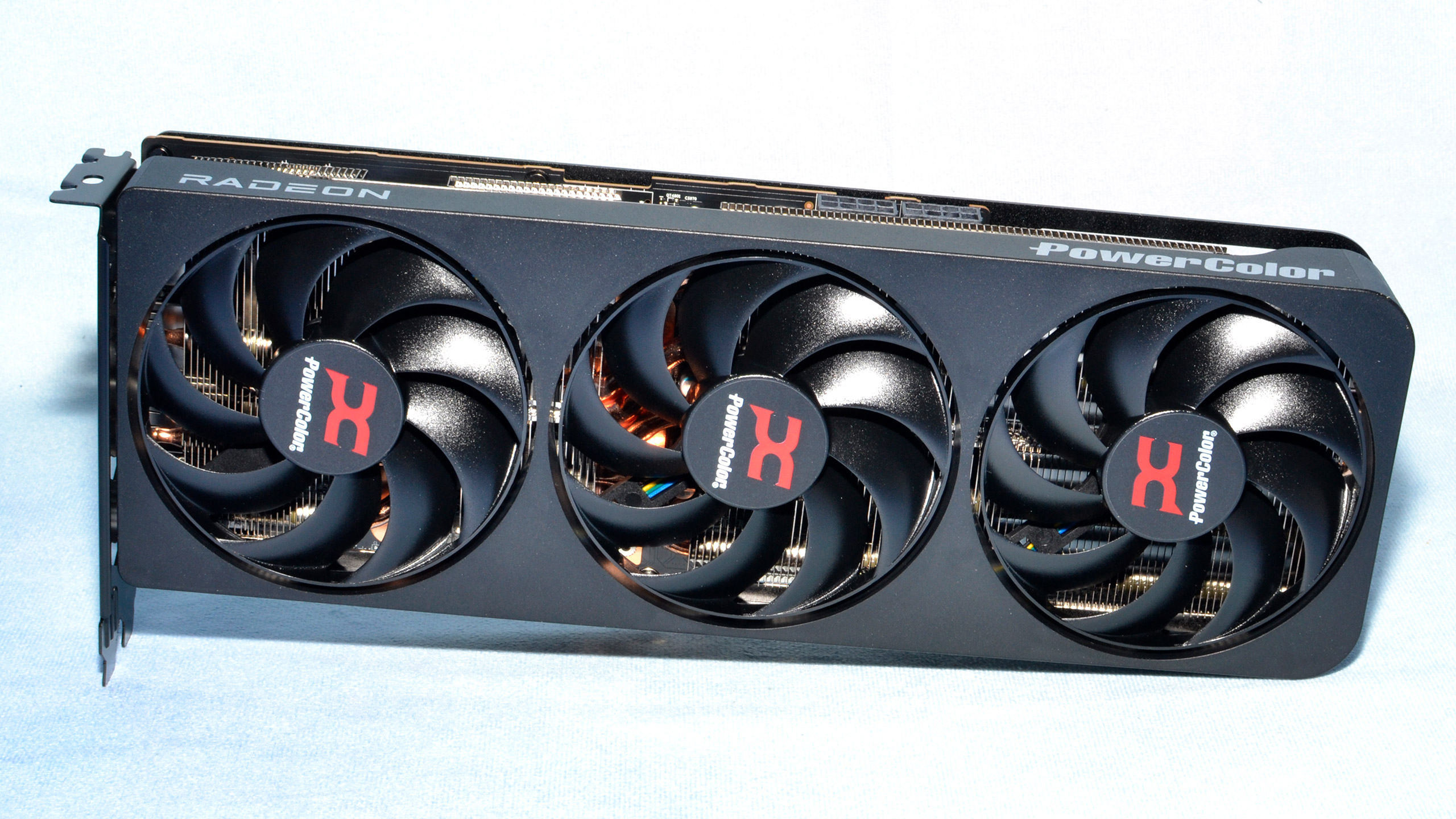Why you can trust Tom's Hardware
AMD Radeon RX 9070 XT and RX 9070 Content Creation, Professional Apps, and AI
Modern GPUs like the RX 9070 XT aren't just about gaming. They're used for video encoding and professional applications, and increasingly, they're being used for AI. We've revamped our professional and AI test suite to give a more detailed look at the various GPUs. We'll start with the AI benchmarks, as those tend to be more important for a wider range of users.
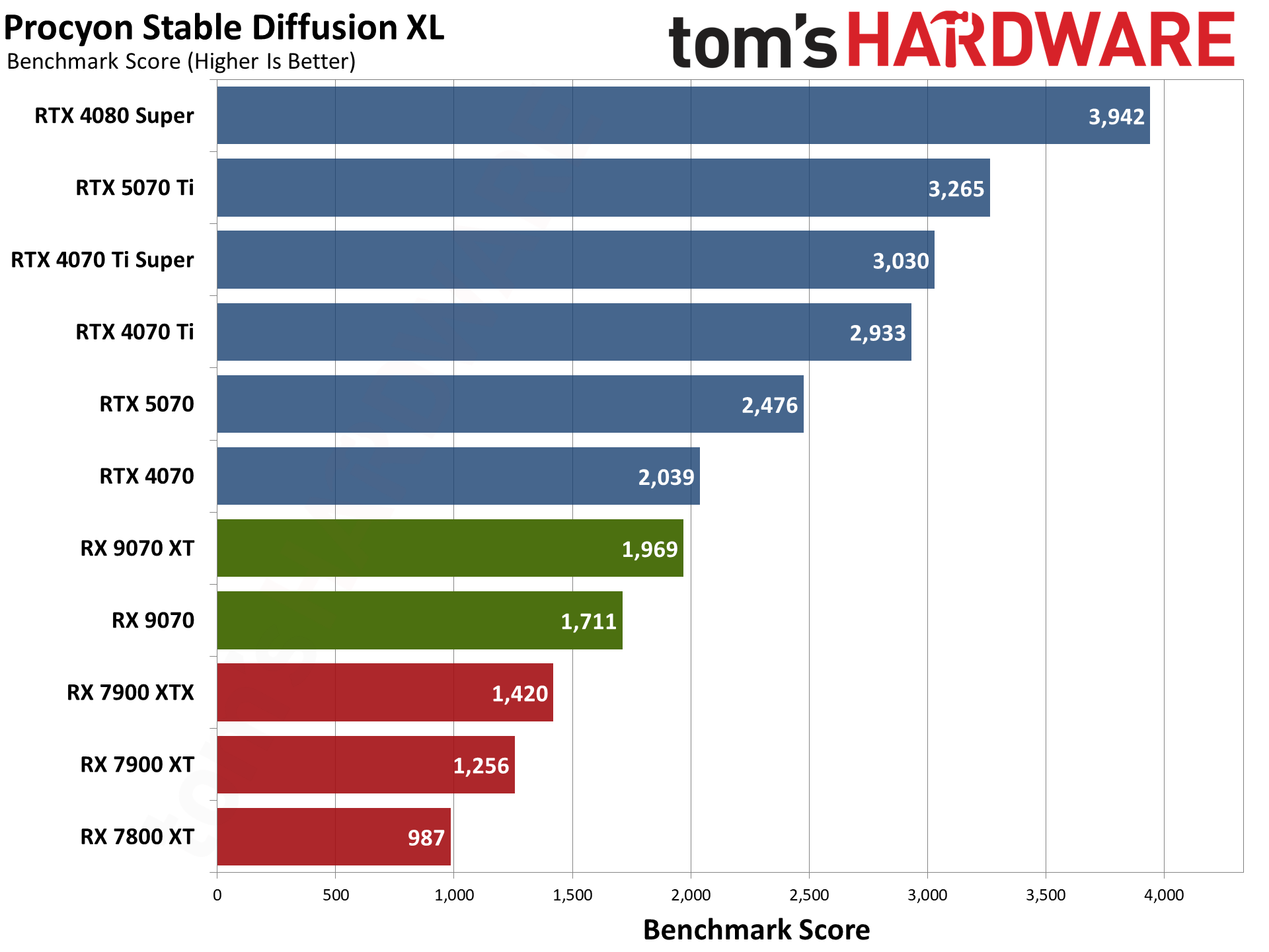
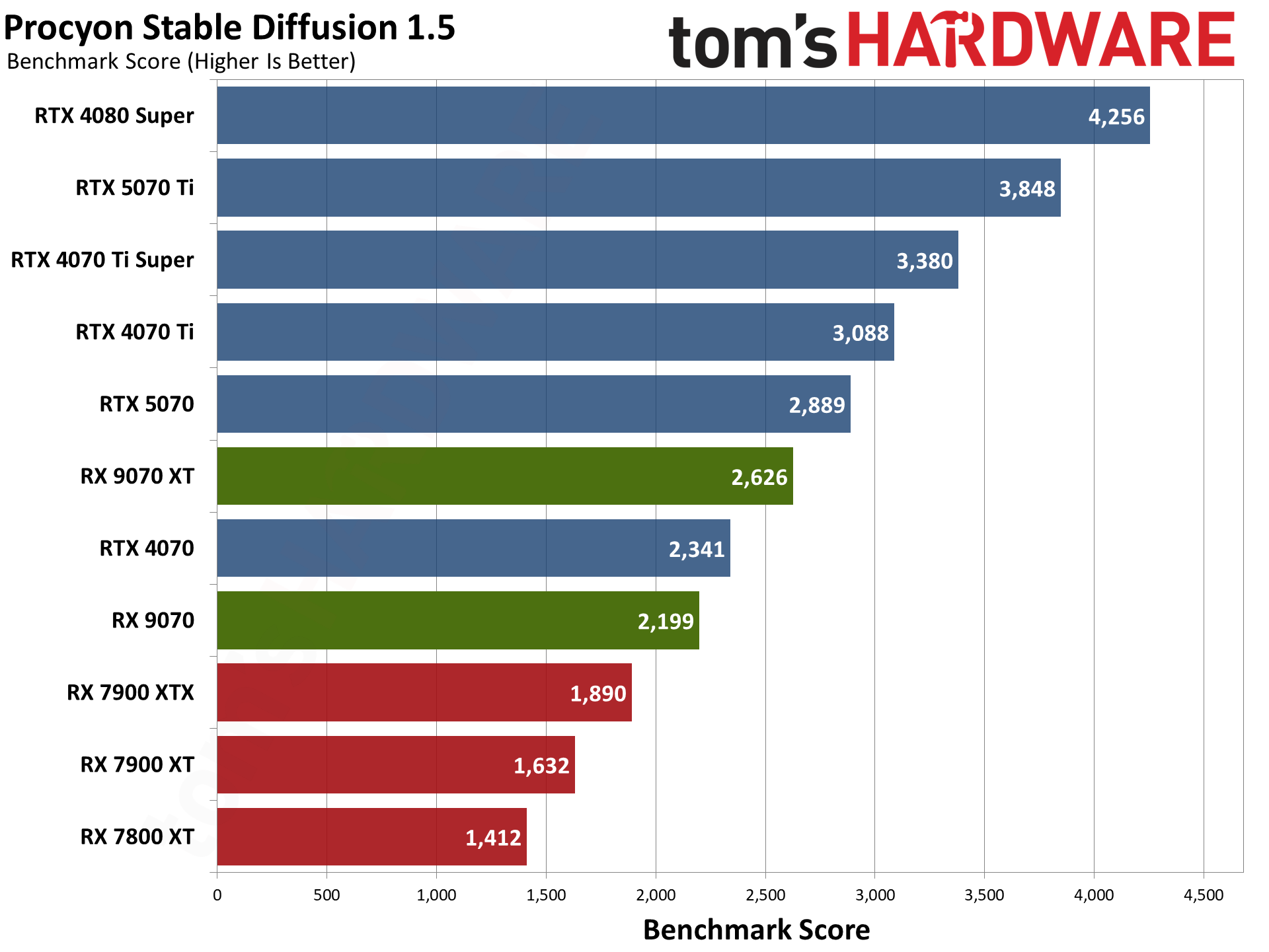
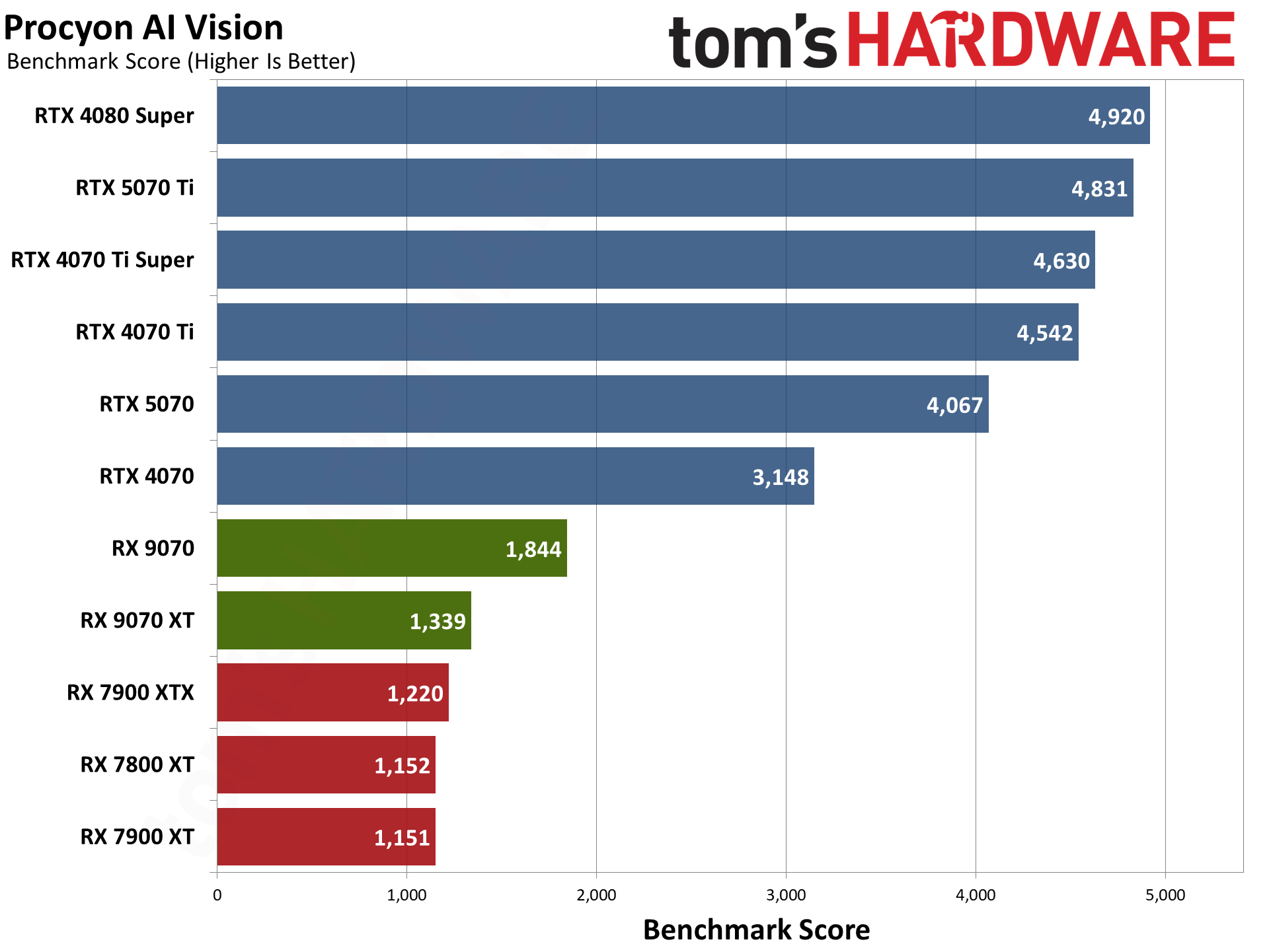
Procyon has multiple AI tests, and we've run the AI Vision benchmark along with two different Stable Diffusion image generation tests. The tests have several variants available that are all determined to be roughly equivalent (in output) by UL: OpenVINO (Intel), TensorRT (Nvidia), and DirectML (potentially for everything, but mostly for AMD). There are also options for FP32, FP16, and INT8 data types on some of the tests, which can give different results. We tested the available options and used the best result for each GPU.
Procyon has finally received the necessary update to run the TensorRT workloads on Blackwell 50-series GPUs, which wasn't the case for the 5090, 5080, and 5070 Ti reviews. Those same updates also improved the AI Vision performance for Nvidia's RTX 40-series cards, but the Stable Diffusion results remained about the same.
With the updates in place, Nvidia pretty much clobbers AMD. Even the RTX 4070 outperforms the 9070 XT in SDXL, though AMD does come out ahead in SD 1.5. And in the AI Vision tests, the gap is even worse. The 4070 is 71% faster than the 9070 XT, while the 5070 more than doubles its performance.
If there's a bright spot here, it's that AMD's new 9070 cards do outperform the prior generation AMD GPUs. It's also worth pointing out that Nvidia and Intel GPUs get a performance boost by using integers rather than floating point in the AI Vision test, but AMD doesn't get good performance from integer mode when using ONNX. It defaults back to the GPU shaders rather than running integer computations on the AI accelerators, which clearly doesn't help AMD's standings in this particular task.
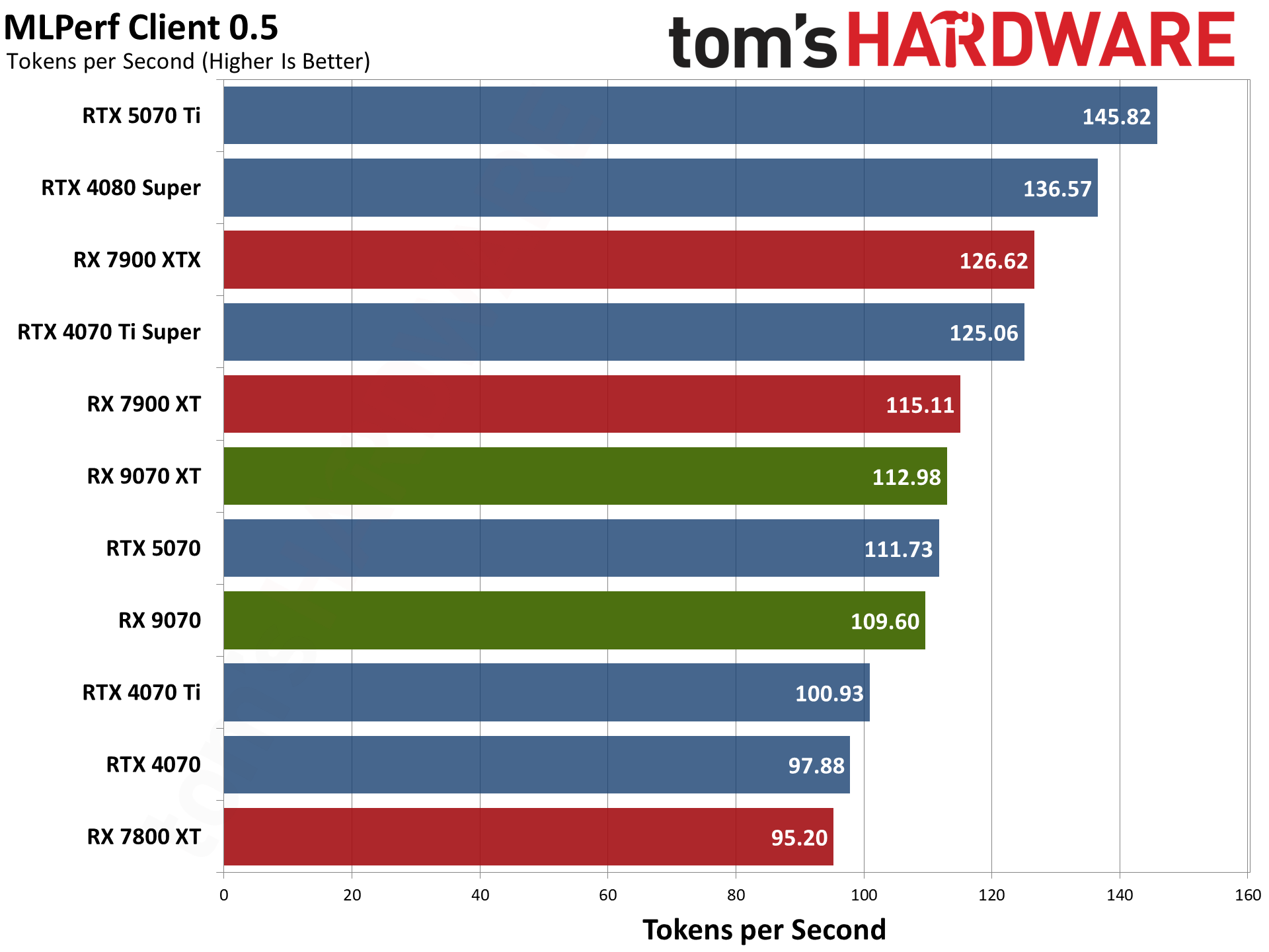
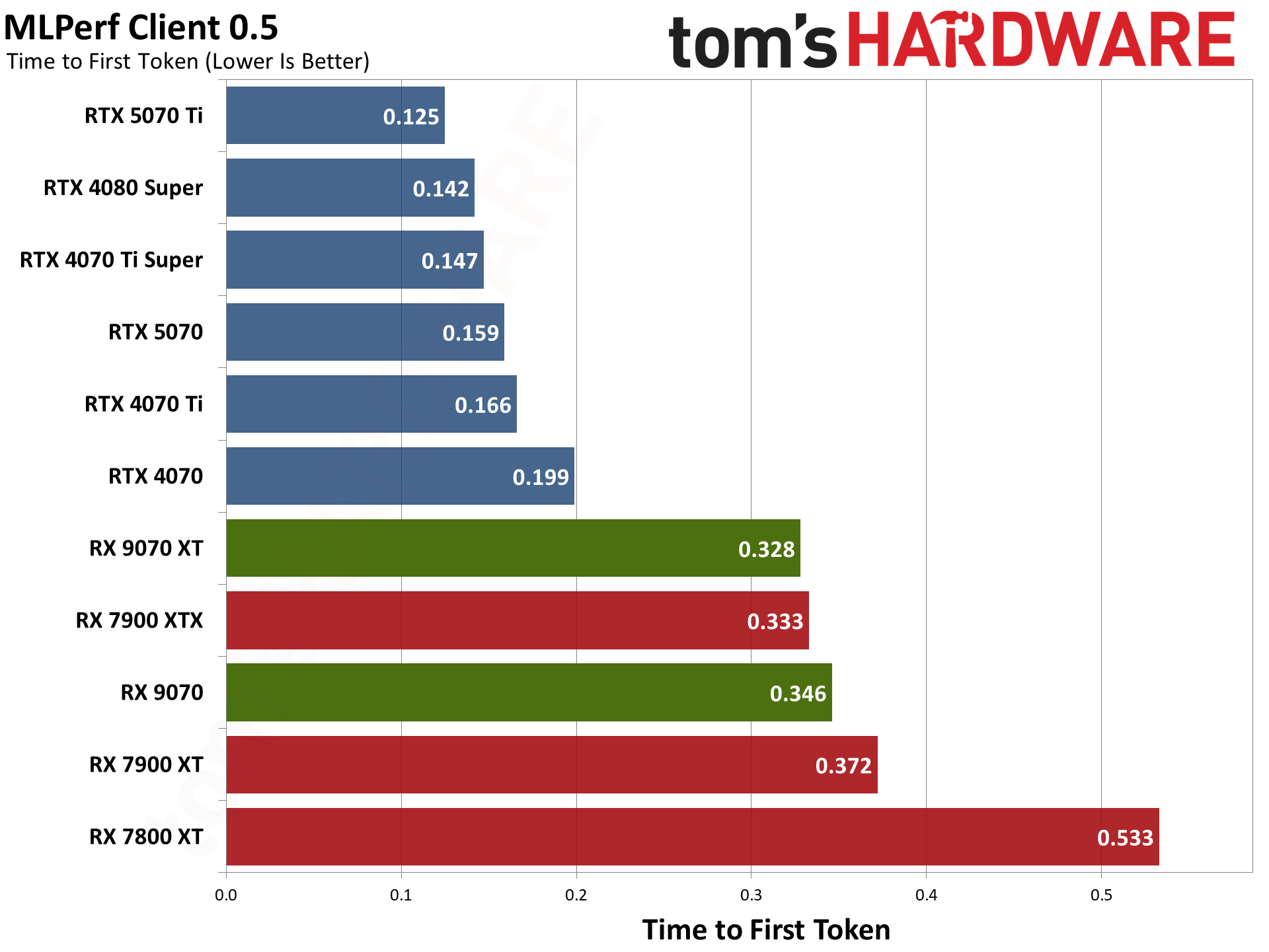
ML Commons' MLPerf Client 0.5 test suite does AI text generation in response to a variety of inputs. There are four different tests, all using the LLaMa 2 7B model, and the benchmark measures the time to first token (how fast a response starts appearing) and the tokens per second after the first token. These are combined using a geometric mean for the overall scores, which we report here.
While AMD, Intel, and Nvidia are all ML Commons partners and were involved with creating and validating the benchmark, it doesn't seem to be quite as vendor-agnostic as we would like. AMD and Nvidia GPUs only have a DirectML execution path, while Intel has both DirectML and OpenVINO as options. Intel's Arc GPUs score quite a bit higher with OpenVINO than with DirectML.
The 9070 series cards only do slightly better than the 7000-series GPUs in time to first token, while the tokens per second results are a lot closer than in some of the other benchmarks. It's not clear exactly why that is, but the 9070 cards also come in below the 7900 XT in tokens per second, so there's likely plenty of room for improvement here.
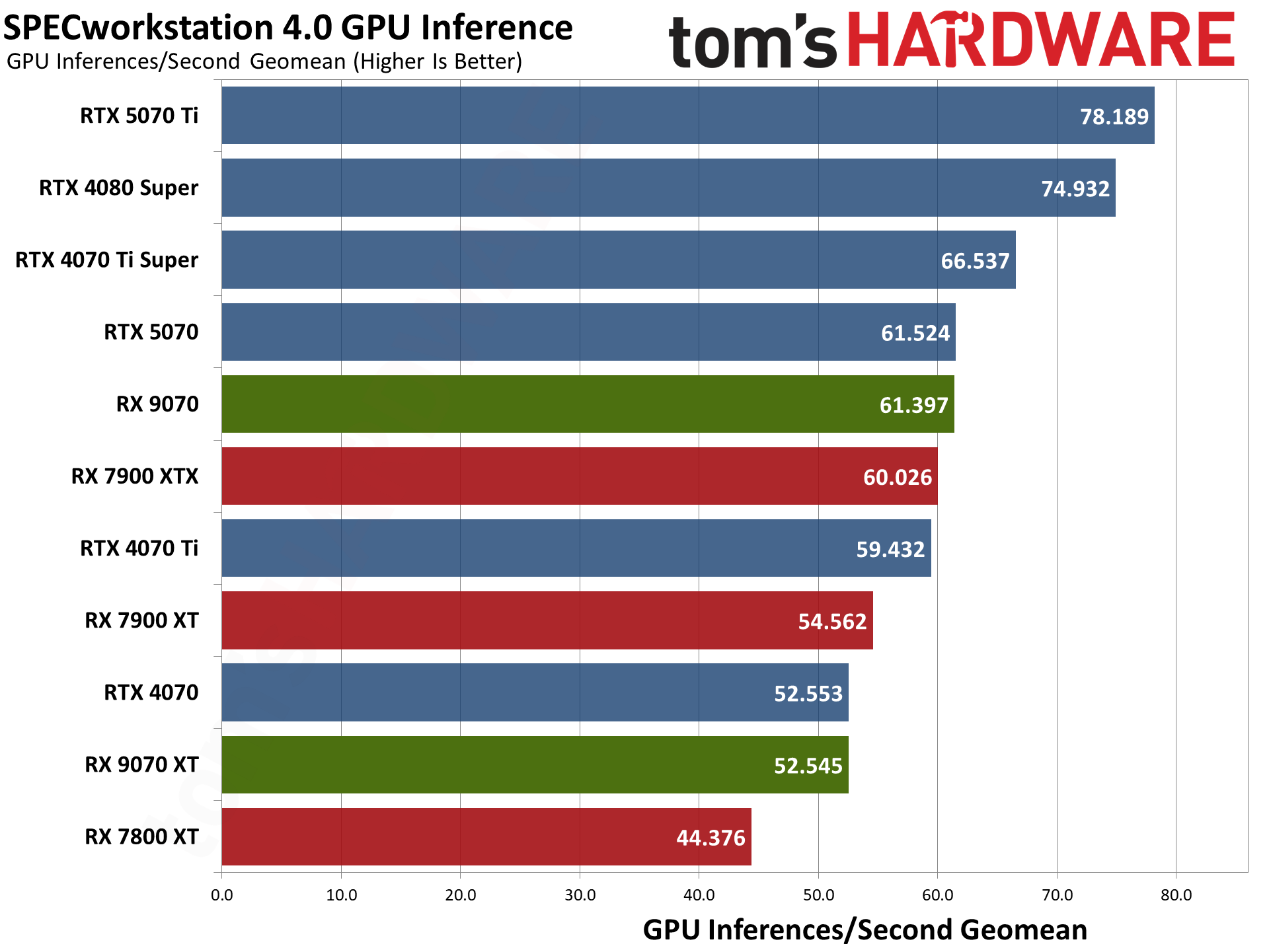
We'll have some additional SPECworkstation 4.0 results below, but there's an AI inference test composed of ResNet50 and SuperResolution workloads that runs on GPUs (and potentially NPUs, though we haven't tested that). We calculate the geometric mean of the four results given in inferences per second, which isn't an official SPEC score but it's more useful for our purposes.
The RX 9070 and 9070 XT results were odd here, with the 9070 outperforming the 9070 XT. We'll have to look into retesting; perhaps we inadvertently swapped the numbers when recording the results. But the 9070 ends up on par with the RTX 5070, so we'd expect the 9070 XT to rank a lot higher.
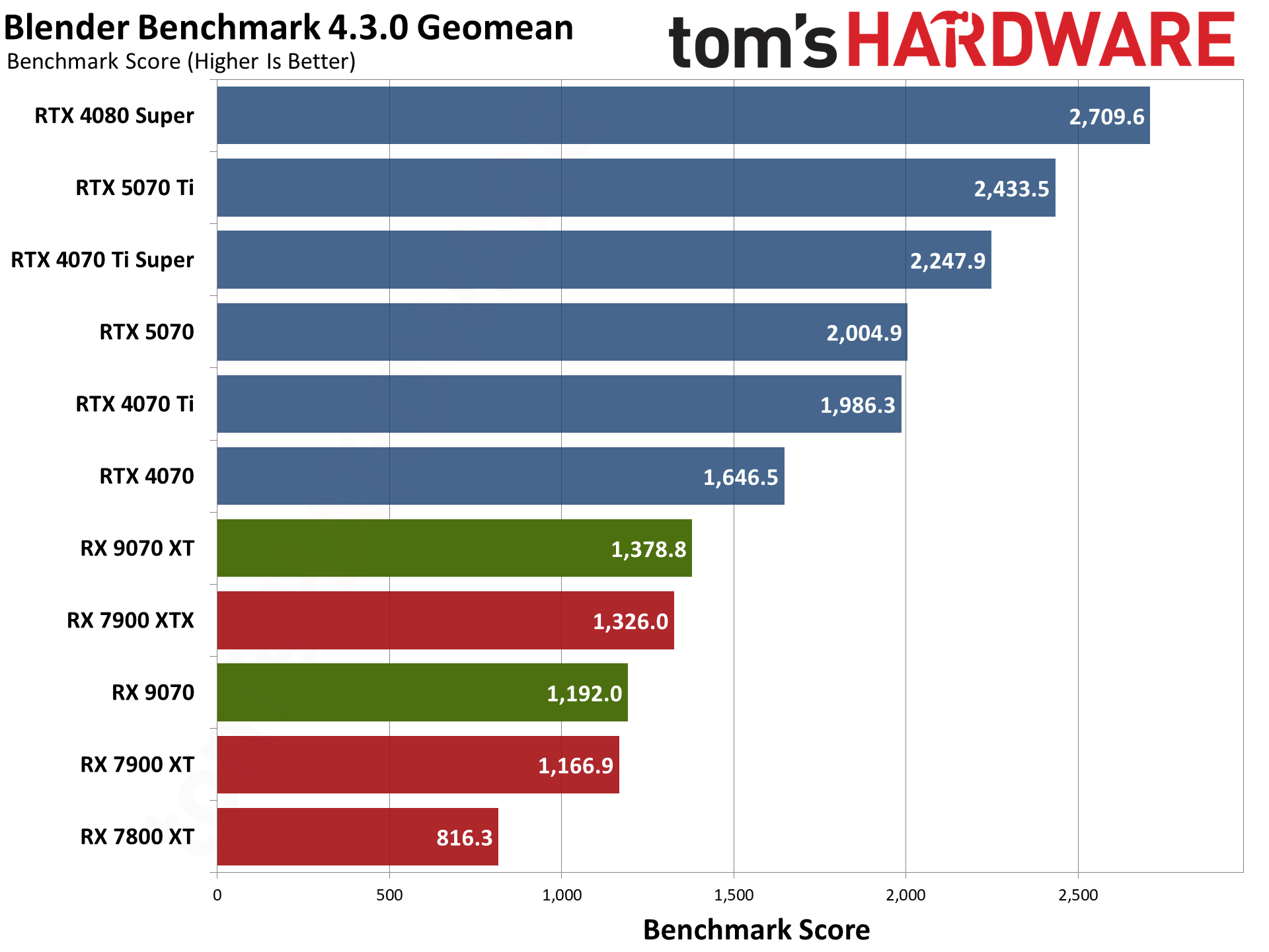
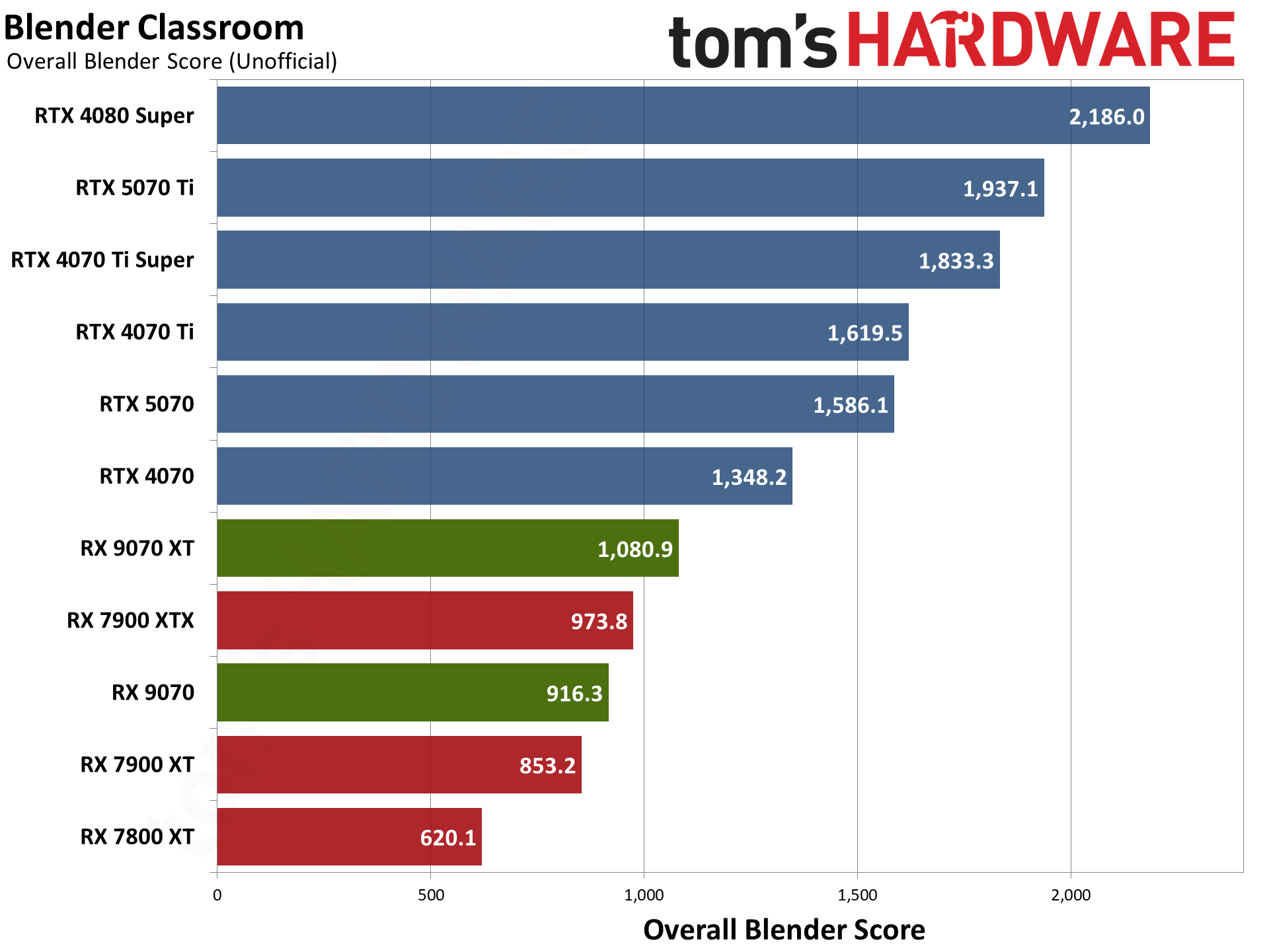
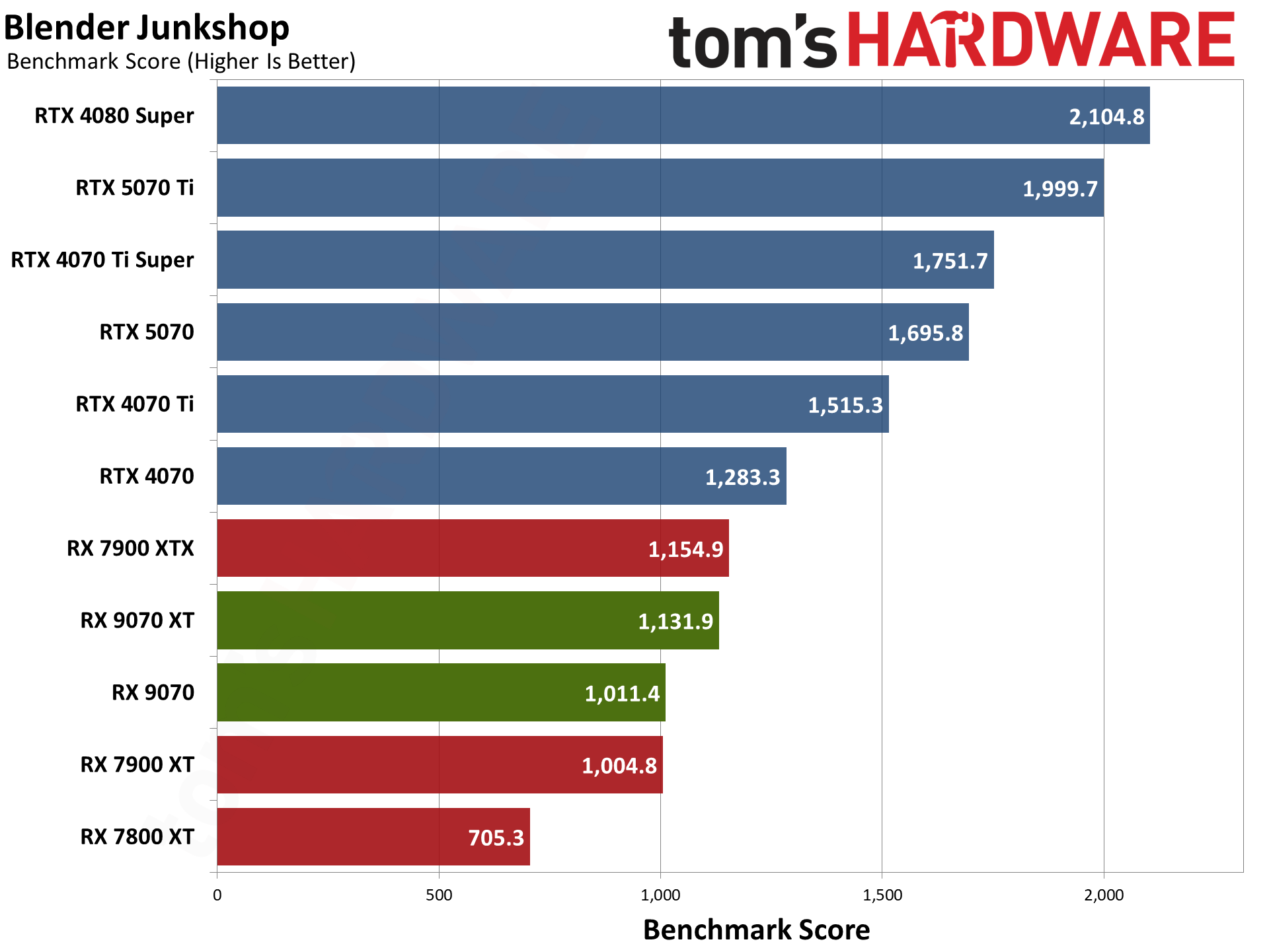
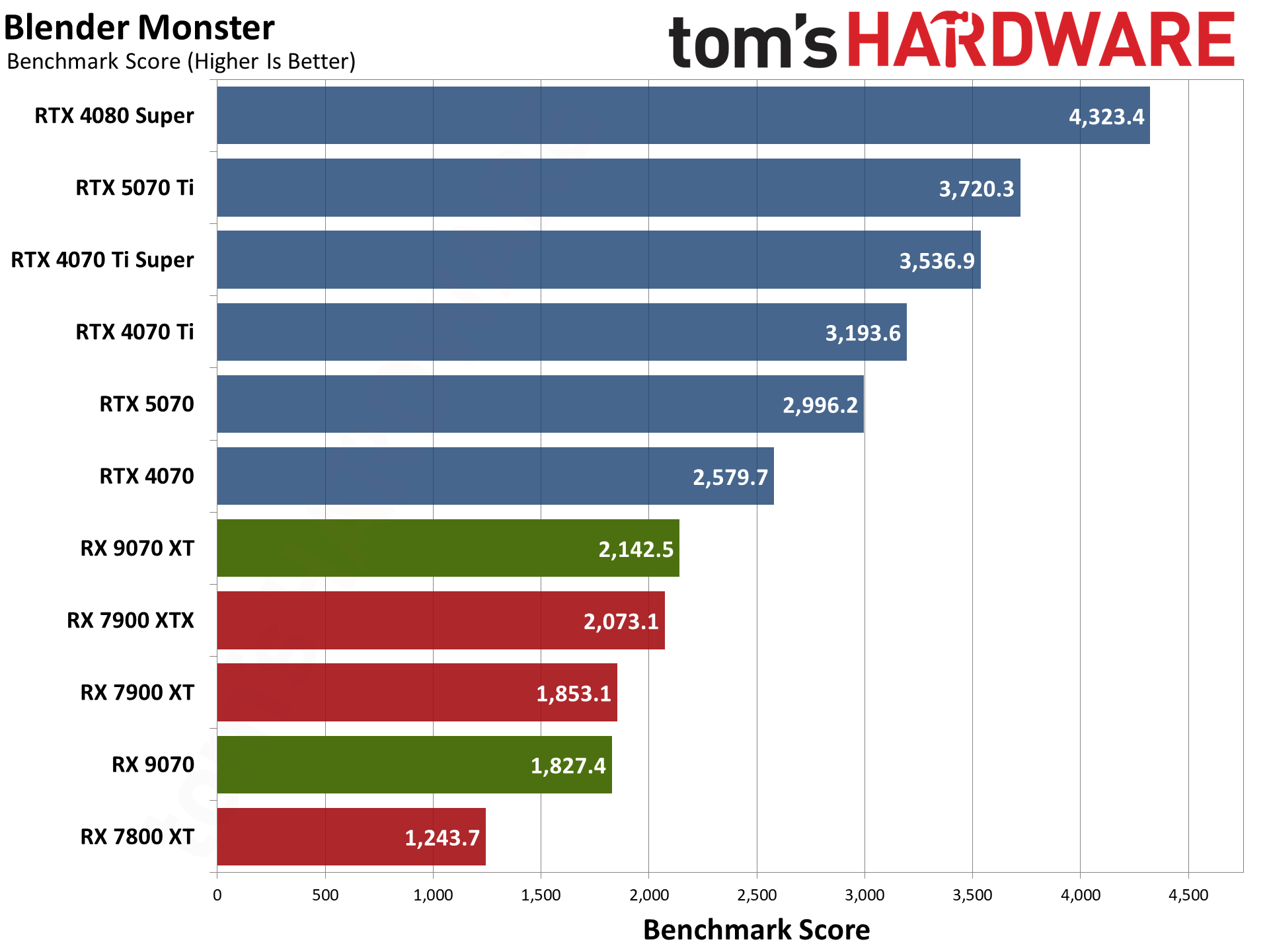
For our professional application tests, we'll start with Blender Benchmark 4.3.0, which has support for Nvidia Optix, Intel OneAPI, and AMD HIP libraries. Those aren't necessarily equivalent in terms of the level of optimizations, but each represents the fastest way to run Blender on a particular GPU at present.
We need to note here that the 9070 cards couldn't run Blender Benchmark right now. Instead, we needed to get a special build of Blender 4.4.0, the full application, that supported the RDNA 4 GPUs. It doesn't appear to have inflated the new AMD GPU results, which end up being slightly ahead of the 7900 XTX and 7900 XT for the two newcomers. Nvidia meanwhile beats AMD's fastest card with the 4070 and above.
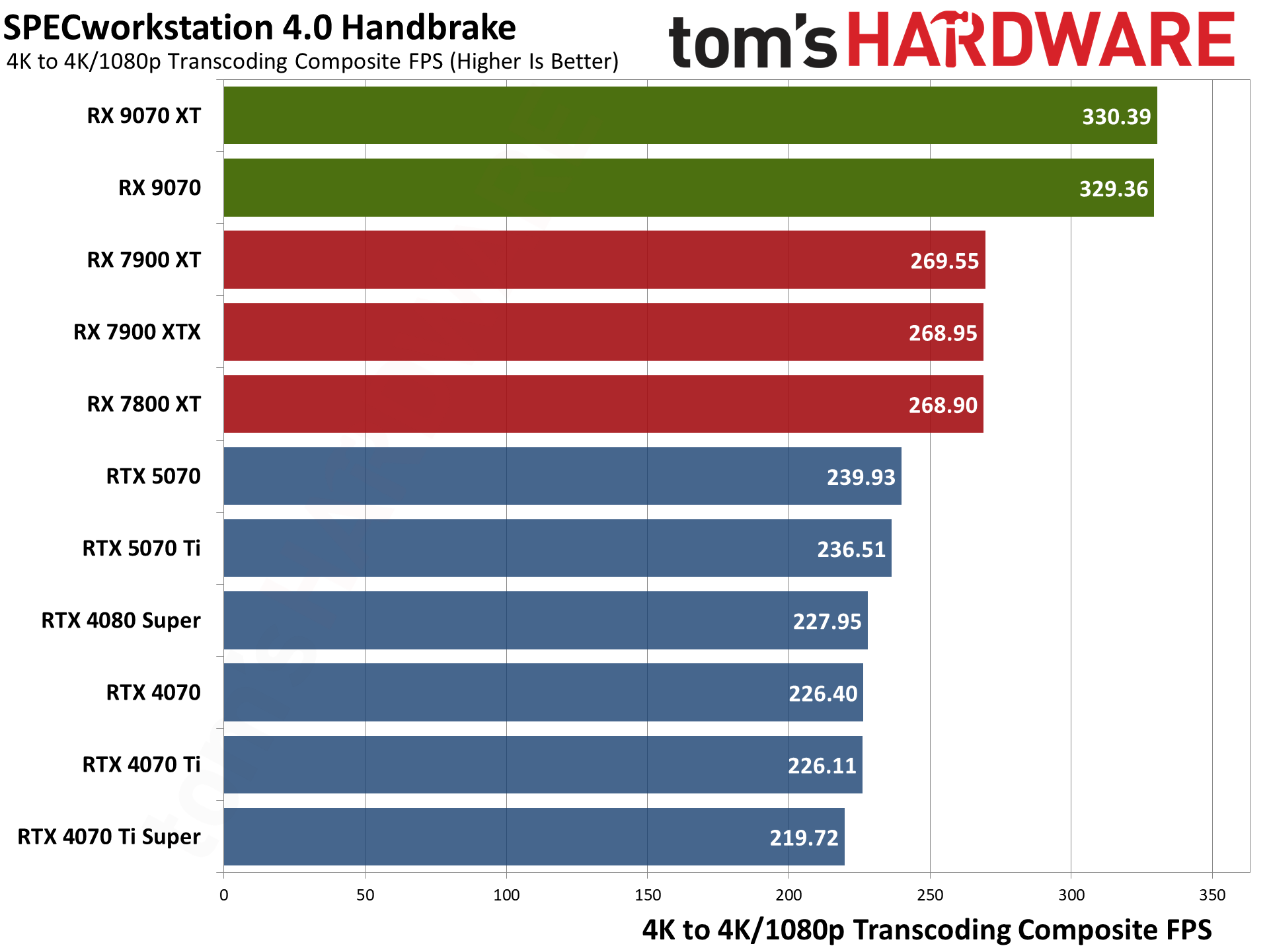
SPECworkstation 4.0 has two other test suites that are of interest in terms of GPU performance. The first is the video transcoding test using HandBrake, a measure of the video engines on the different GPUs and something that can be useful for content creation work. We use the average of the 4K to 4K and 4K to 1080p scores. Note that this only evaluates speed of encoding, not image fidelity.
AMD has improved its video encoding hardware with RDNA 4, so our previous GPU encoding tests that showed AMD with significantly lower image fidelity are no longer up to date — particularly with regards to the 9070 cards. But performance has also improved, with the 9070 cards basically tied for maximum performance.
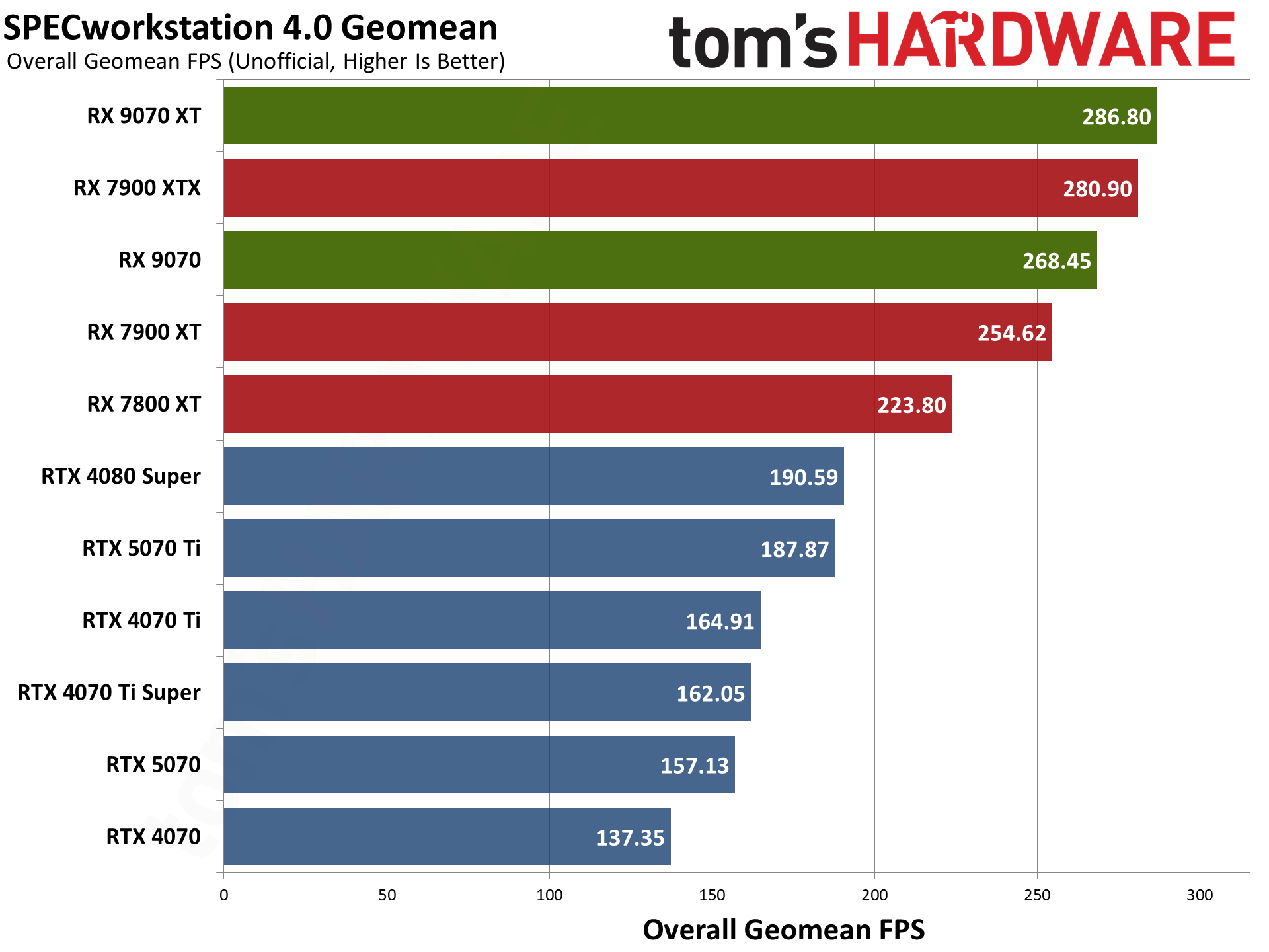
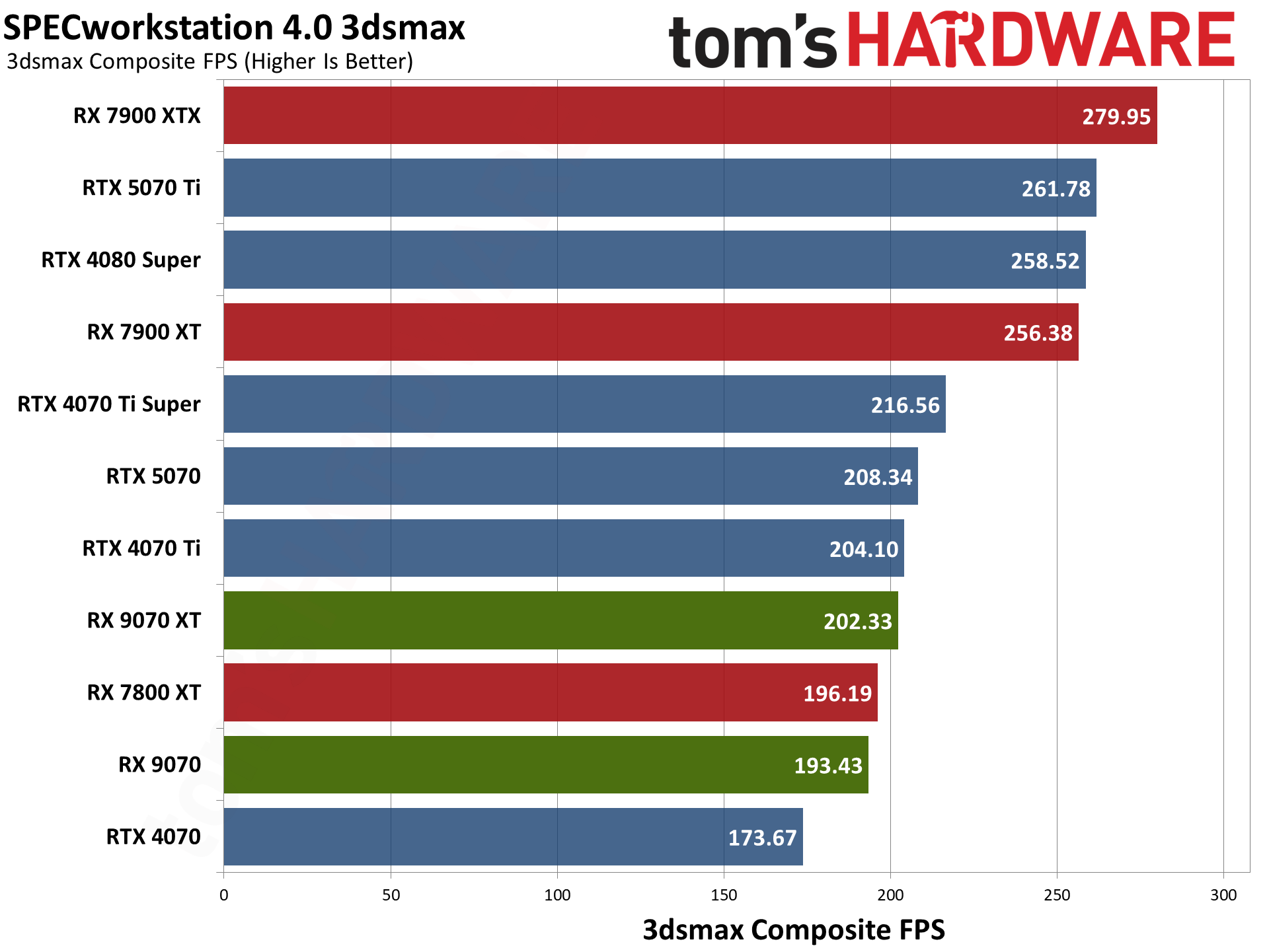


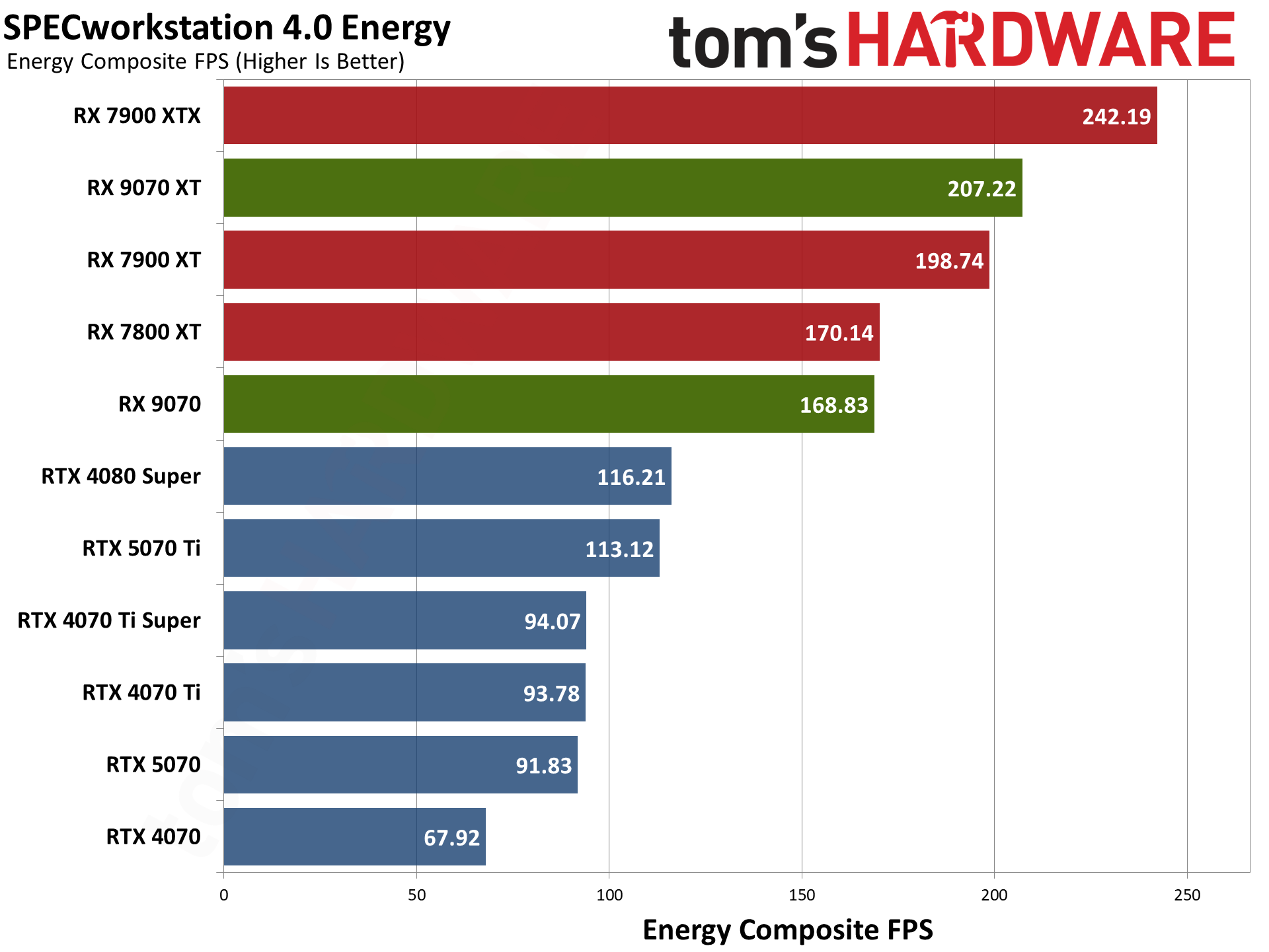
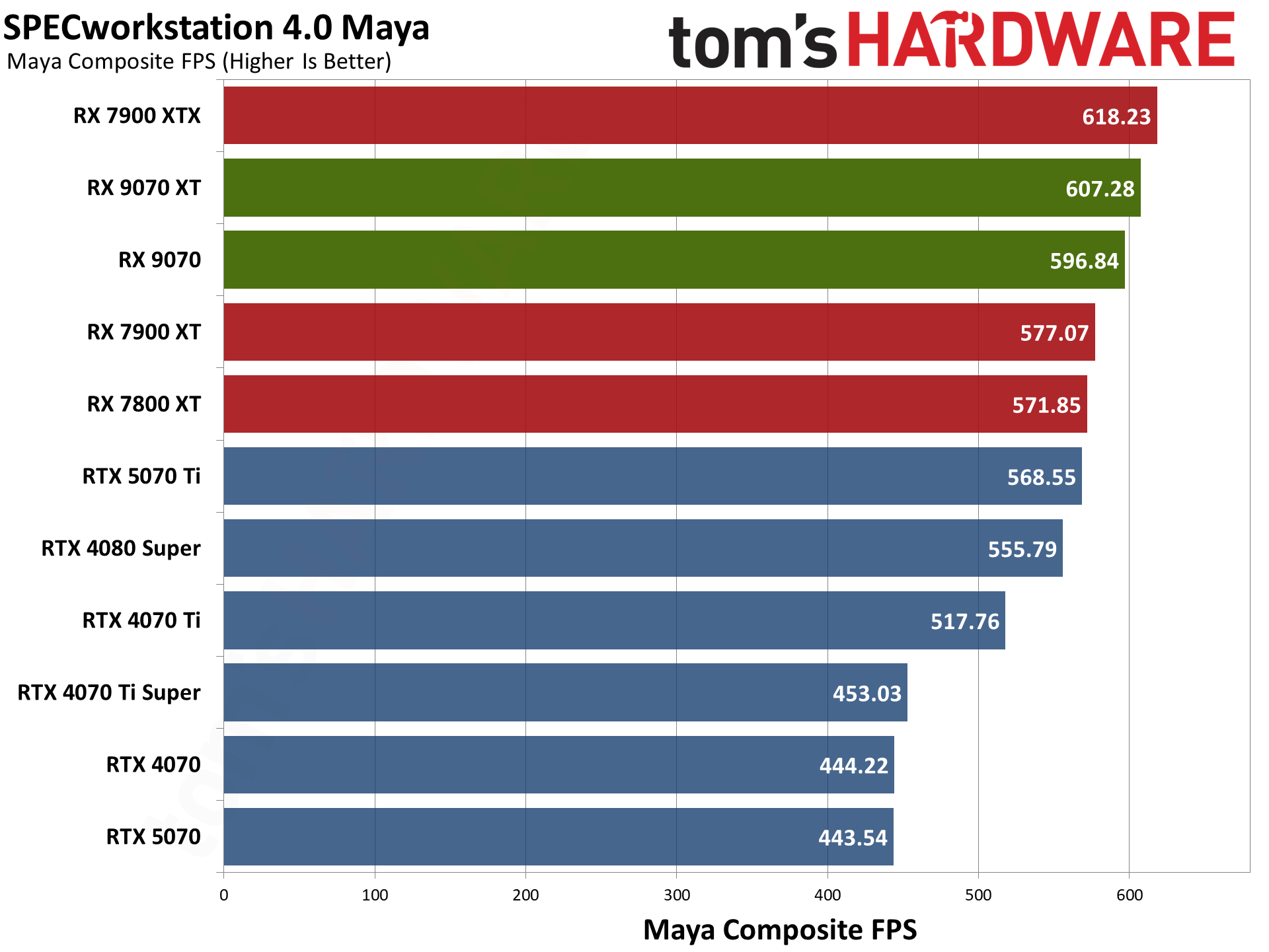
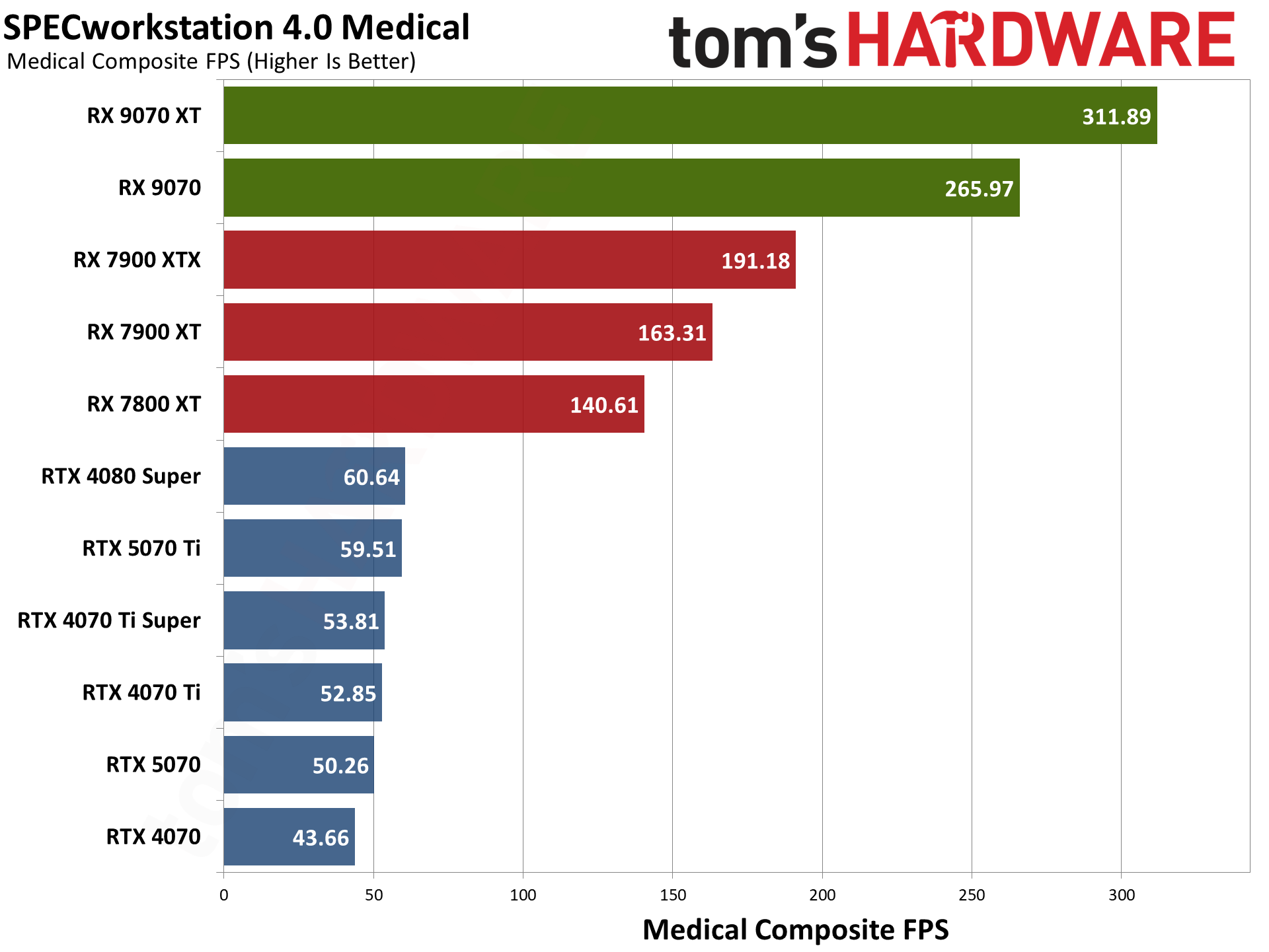
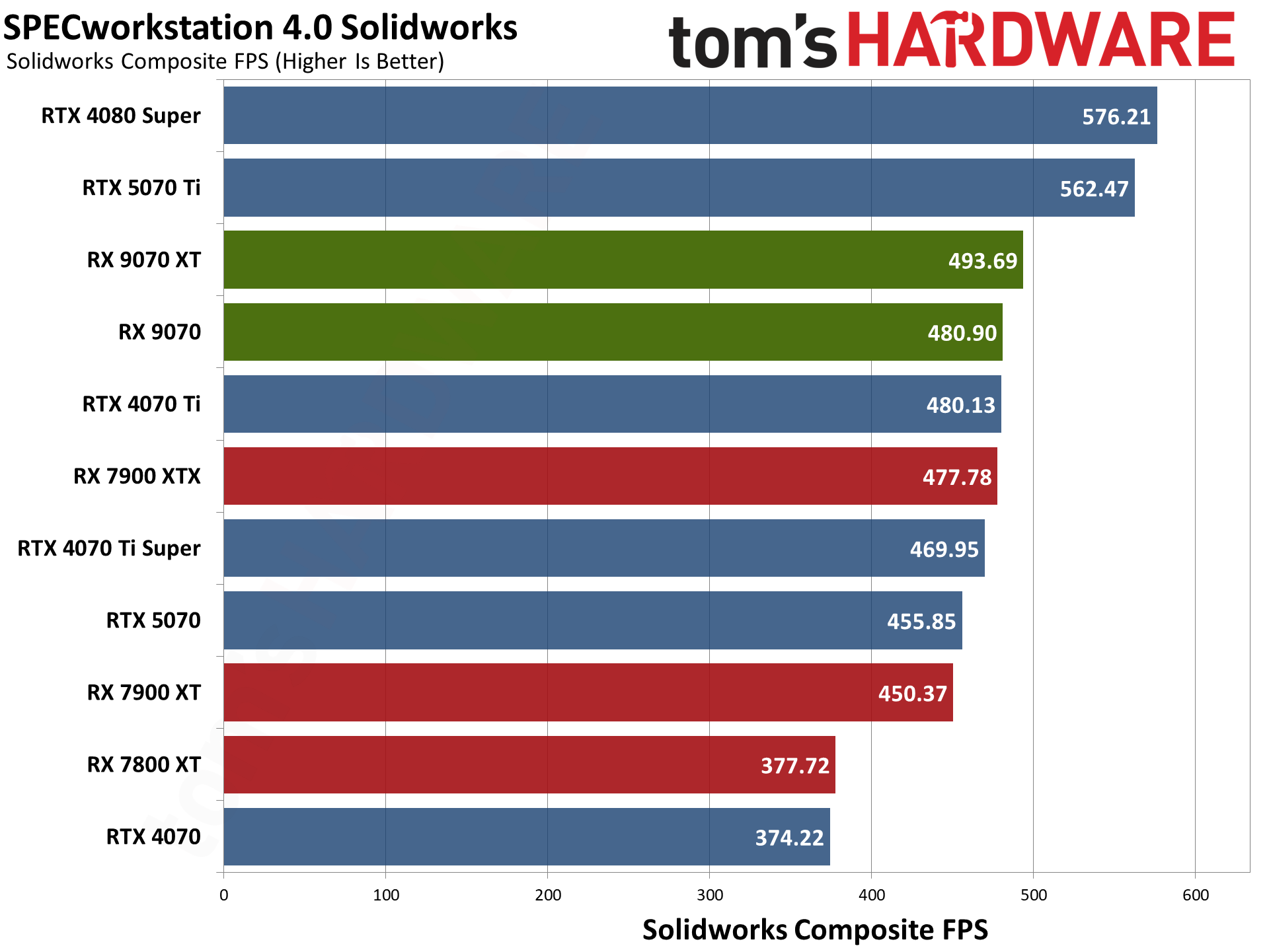
Our final professional app tests consist of SPECworkstation 4.0's viewport graphics suite. This is basically the same tests as SPECviewperf 2020, only updated to the latest versions. (Also, Siemen's NX isn't part of the suite.) There are seven individual application tests, and we've combined the scores from each into an unofficial overall score using a geometric mean.
AMD's drivers for its consumer cards tend to be more friendly toward these professional applications, and the 9070 series doesn't alter that. Instead, AMD improves its standings slightly, with the 9070 XT taking the top spot, just ahead of the 7900 XTX. The 9070 ends up slightly behind the XTX, in third place overall.
These AI and professional tests are ultimately just one aspect of GPU performance, and if you only care about gaming they shouldn't exert much influence on your choice of GPU. That's especially true of the professional tests. AI could become something useful even for gaming, maybe, but higher Blender performance will only matter if you're actually using Blender for 3D modeling.
Get Tom's Hardware's best news and in-depth reviews, straight to your inbox.
- MORE: Best Graphics Cards
- MORE: GPU Benchmarks and Hierarchy
- MORE: All Graphics Content
Current page: AMD Radeon RX 9070 XT and RX 9070 Content Creation, Professional Apps, and AI
Prev Page AMD Radeon RX 9070 XT and RX 9070 Full RT and FSR 4 Testing Next Page AMD Radeon RX 9070 XT and RX 9070 Power, Clocks, Temps, and Noise
Jarred Walton is a senior editor at Tom's Hardware focusing on everything GPU. He has been working as a tech journalist since 2004, writing for AnandTech, Maximum PC, and PC Gamer. From the first S3 Virge '3D decelerators' to today's GPUs, Jarred keeps up with all the latest graphics trends and is the one to ask about game performance.
-
Crazyy8 I don't have much money, but I might have just enough for the 9070 XT. I might finally be able to say I have high end hardware! :smile:Reply
Look forward to release, hope it isn't scalped! -
cknobman I'll be online super early to try and snag a $599 9070xt.Reply
Count me in the market share shift over to AMD. -
palladin9479 Now it's all down to availability and how much product AMD can pump into the channel. Anyone trying to buy a dGPU is left with almost no real options other then to pay ridiculous markups to scant supply. If AMD can pump enough product into the channel, then those prices will go down cause well, that's how the supply vs demand curve works.Reply -
Elusive Ruse Thank you for the detailed review and analysis as always @JarredWaltonGPU I’m glad that we finally have a proper offering at the midrange. AMD dealt a powerful blow to Nvidia, maybe a bit late but better than never.Reply
The ball is now in Nvidia’s court, let’s see how much they care about the gaming market, I also believe this is a matter of brand image as well; losing to AMD even if it’s not at the high end still hurts. -
JarredWaltonGPU Reply
Seriously! Well, more like late 2020 or early 2021. Everything is basically sold out right now (though 5070 has a few $599 to $699 models actually in stock right this second at Newegg).Gururu said:Very nice review although the setting feels like a time warp to Dec 2022. -
Colif They are nice cards but I will follow my own advice and not buy a card this generation and see what next brings. Xt beats mine in some games but not all, and since I don't play RT games anyway, I don't think its worth itReply
I am saving for a new PC so it wouldn't make sense to buy one now anyway. Maybe next gen I get one that is same color as new PC will be... -
SonoraTechnical Saw this about the Powercolor Reaper in the article:Reply
PowerColor takes the traditional approach of including three DisplayPort 2.1a ports and a single HDMI 2.1b port. However, the specifications note that only two simultaneous DP2.1 connections can be active at the same time. Also, these are UHBR13.5 (54 Gbps) ports, rather than the full 80 Gbps maximum that DisplayPort 2.1a allows for.
So, 3 monitors using display port for FS2024 is a non-starter? Have to mix technologies (DP and HDMI?) Is this going to be true for most RX 9070 XT cards? -
JarredWaltonGPU Reply
Not by my numbers. AMD said the 9070 XT would be about 10% slower than the 7900 XTX in rasterization and 10% faster in ray tracing. Even if that were accurate, it would still make the 9070 XT faster than the 7900 XT.baboma said:I watched the HUB review, since it came out first. The short of it: 9070XT = 7900XT (not XTX), both in perf and power consumption. So if you think Nvidia (Huang) lied about 5070's perf, then AMD also lied.
394
395 -
Colif The low stock and things being OOS the same day they released reminds me of the 7900 release day. I was too slow to get an XTX but I was happy with an XT.Reply
